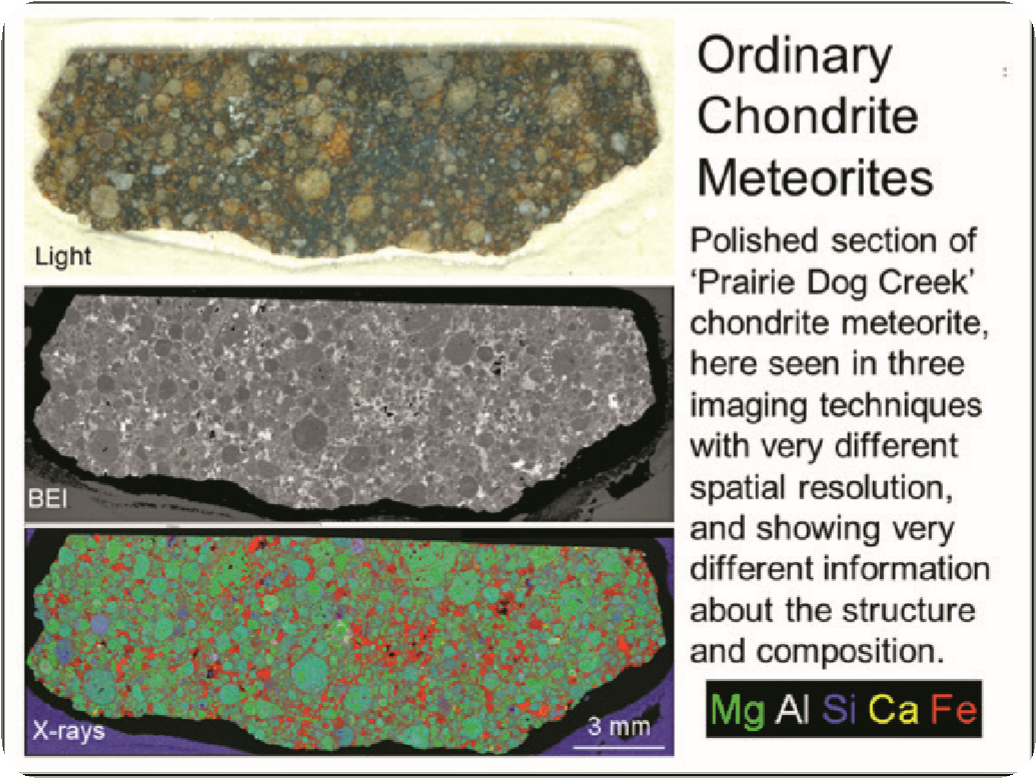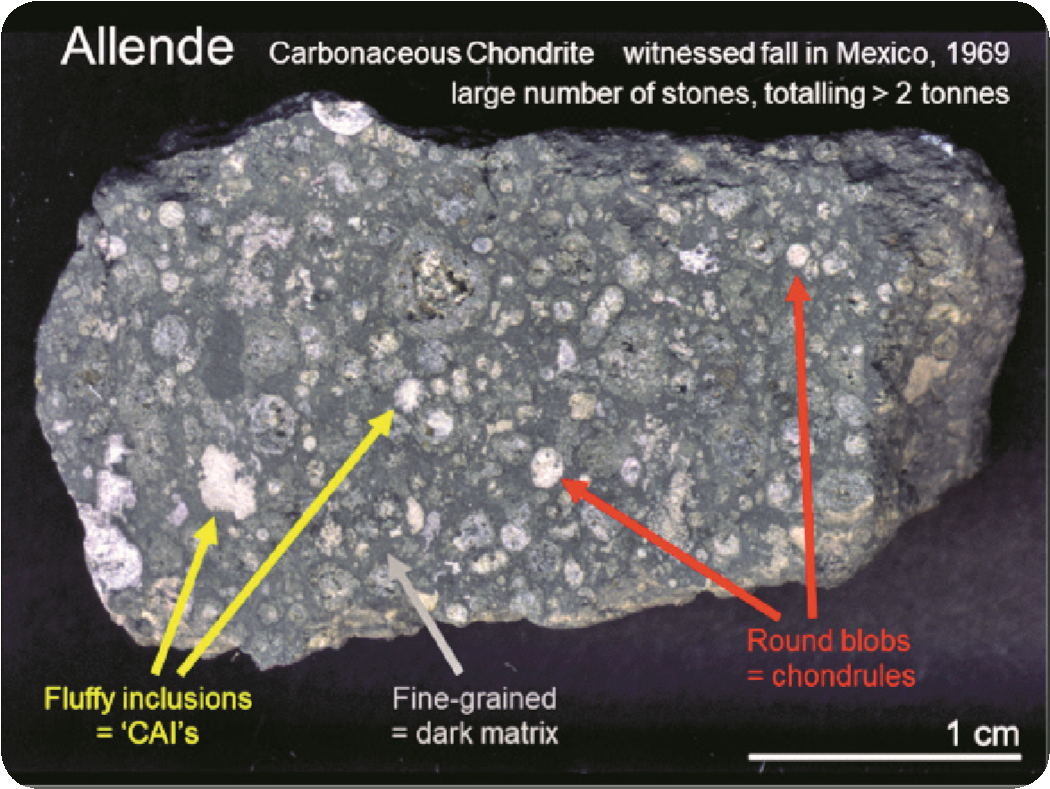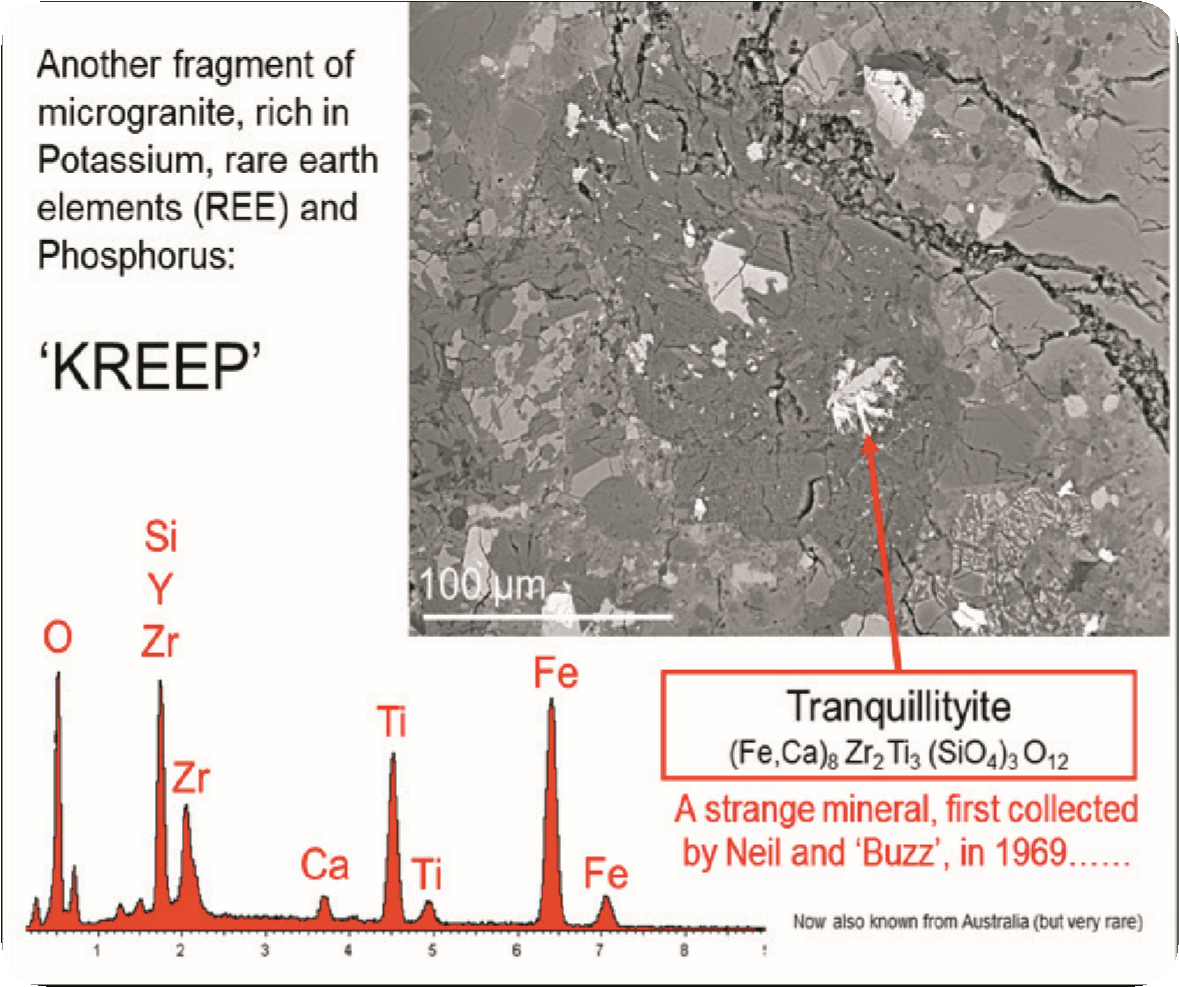5th October 2017
Microscopes have been a fundamental tool for geologists since the advent of mineralogy and petrology. Examination of thin sections of rocks in plain and polarised light under the microscope is key to identifying their mineral composition, fabric, and texture. In recent decades microscopy has evolved progressively from basic optical microscopy techniques to analytical electron microscopy and highly sophisticated X-ray, ion and laser microprobes. These new analytical techniques allow mapping of the distribution of elements, an understanding of molecular bonding, and the measurement of isotopic composition. Now an everyday tool, automated mapping and point analysis with energy dispersive X-ray spectrometers provides new insights into the composition and origin of many rocks, including meteorites. The examples shown here are included courtesy of the Natural History Museum.
Meteorites provide fairly lowcost samples of extraterrestrial bodies originating from within our solar system. Microscopic analysis of meteorites presents a very different picture of mineral abundance to that seen in rocks from the Earth’s surface – reflecting both survival of very, very old materials from the early history of the Solar System and the preservation of the signatures indicative of extreme physical and chemical conditions.
Types of Meteorites
The fall of Chelyabinsk Meteorite of Russia in 2013 was one the world’s most dramatic recent natural events. The meteorite had an estimated mass of 12,500 tonnes and the energy equivalent of 30 atomic bombs the size of the plutonium bomb dropped on Hiroshima. The fall injured 1500 people, mainly by fragments propelled by blast. Ironically, and worryingly, the near-miss of an unrelated asteroid had been observed the same day, but the Chelyabinsk meteorite slipped through the detection net, and arrived unannounced!
The commonest ‘Find and Fall’ meteorites on Earth are known as ordinary chondrites (87% of all meteorites) which contain subspherical, partially crystalline grains called chondrules. These are usually formed primarily of magnesium silicate minerals, such as olivine and orthopyroxene.
The two meteorites seen to fall at Wold Cottage in 1795 and Middlesborough in 1881 are examples of ordinary chondrites. In reality, these chondrites are far from ordinary objects! Many show evidence of free-floating melt droplets formed in space, hot mineral crystallisation, intense high-pressure shock from ancient collision of asteroids, and surface melting as they entered Earth’s atmosphere. The 2.9 Kg Prairie Dog Creek meteorite (page 17) found in Kansas in 1893 is another good example of an ordinary chondrite. A related group of meteorites, carbonaceous chondrites, also contain abundant chondrules as well as Calcium Aluminum Inclusions (CAIs). These strange structures are thought to have formed from condensation of refractory elements (such as Al, Ti & Ca) combined with oxygen at extremely high temperatures, near the infant Sun. Despite this apparently primitive nature, some also show signs of having been ‘poached’ in saline soapy water and then baked within their asteroid home.
The most extensively investigated carbonaceous chondrite is the Allende meteorite that was witnessed as a fireball in Mexico in 1969. Estimated to be the size of a car, the meteorite (above) contains abundant chondrules and also CAIs, which are amongst the oldest objects formed in the solar system.
Lunar Geology
Meteorites also provide important information on the origin and evolution of the Moon. Meteorites formed of lunar breccia have been found in Australia and are believed to have formed during the Late Heavy Bombardment event that occurred approximately 4.1 to 3.8 billion years ago, about half a billion years after the formation of the satellite. Of particular interest to lunar geology are the strange minerals and rock types, such as KREEP (above). Fractional crystallization of magma can result, in special circumstances, with normally incompatible elements such as Potassium, the Rare Earth Elements and Phosphorus (KREEP) being concentrated in the remaining melt, and then trapped in the crystal lattice of more unusual minerals. Gamma ray mapping from orbit can be used to locate KREEP, apparently the last of the early Highlands magma to solidify. It is thought to lie mainly within the Procellarum Terrane on the lunar surface, sites of impacts and re-melts.
Conclusion
The talk showed how the study of meteorites contributes to the understanding of the origin of the Earth and our solar system. New microscopy has led to many advances and this knowledge will surely increase as specialist investigative techniques continue to be developed and applied and to the challenges presented by the complexity of planetary science.



